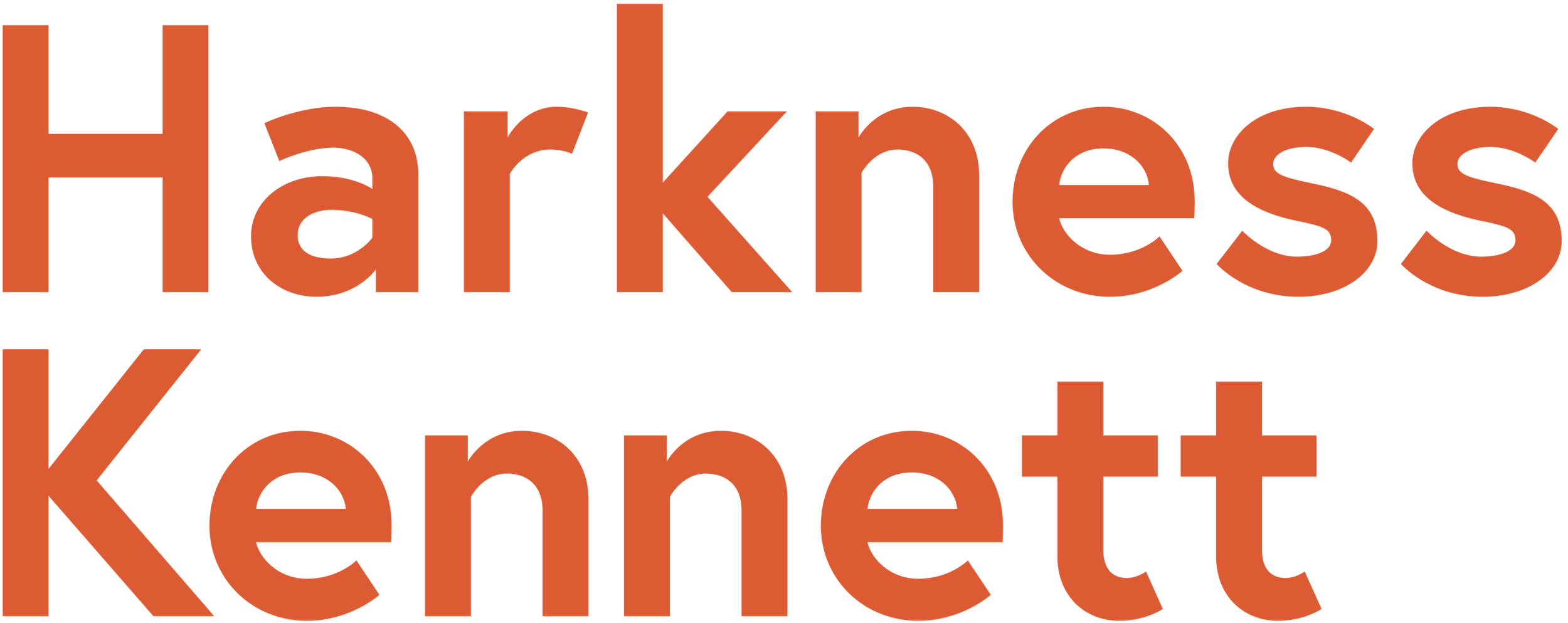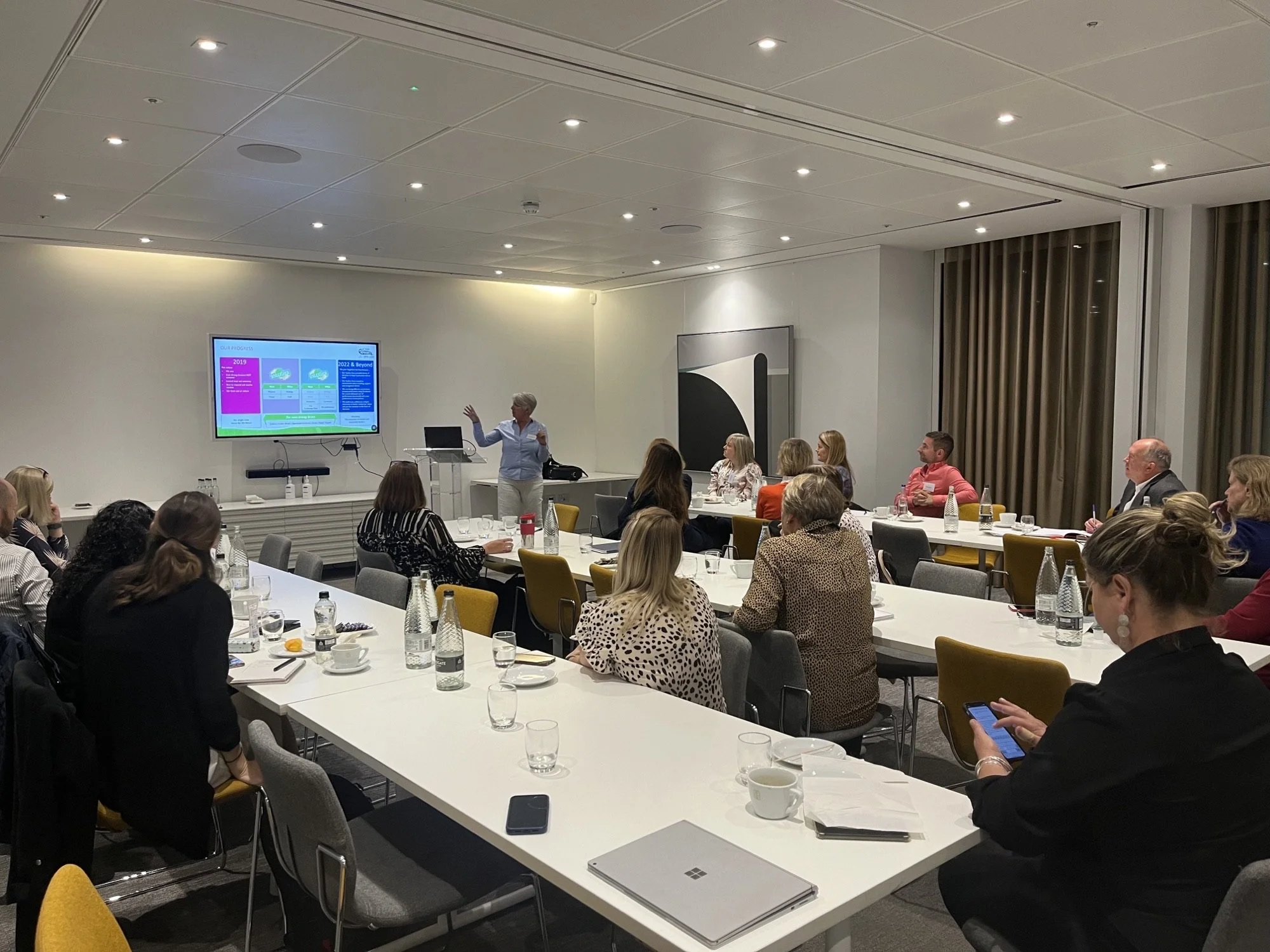Building world class communication capability across a virtual team
Here at HK ‘Workshop Day’ always brings great excitement – and last week’s was no exception. We were particularly pleased to be able to share a joint case study with our client Susan Quain, Associate Director of Global Digital Channels at Fidelity International. During last year and despite the ongoing challenges of the pandemic, Susan and her boss joined forces with our Associate Director Chris Crofts and HK Partner James Harkness to deliver a bespoke training programme to build a world class communications team.
During the pandemic, many organisations have had a light bulb moment about the value of their internal communications function. The need to keep your communications team at the top of their game has never been more important, but how can global organisations achieve that in our increasingly unpredictable and virtual world?
Before the pandemic, running a development programme on this scale would have involved much globetrotting and many airmiles. In 2021 it meant delivering a programme of online experiences that would set the comms team at Fidelity International on course to transform communication within the business.
Susan began by explaining the issues that brought her to HK; a sizeable, global communications team that had restructured 6 months previously, a real mix of expertise and experience, and a need for greater consistency and cohesion in their approach. The team decided that external help was needed to help them take a step back and assess how to move forwards.
The critical first step on this journey was insight; from employees, leaders and the team themselves to help them understand what was going well, what had room for improvement, and to understand their own, personal needs for development. Susan explained that it felt like a brave step to undergo this type of evaluation. She made the point that with a team of quite diverse levels of experience it needed to be delivered sensitively and constructively, with a sense of levelling up and an opportunity for growth.
Susan was delighted at how well the team responded to the challenge; with honest feedback and supported space for self-reflection the team were able to begin their journey of improvement. A key element of the reflection was quantifying skills, for example setting out 4 clear levels of stakeholder management by which team members could easily assess themselves and set improvement targets. Importantly, she explained that team were able to see this as a real opportunity and felt ready to run with it.
Having mapped out the needs of the team, the programme was designed around 5 core elements. For each one there was a 90 minute online team session, with pre-work beforehand and homework to help embed the learning. Within each of these interactive sessions were exercises on business related topics with examples tailored and relevant to the team. Breakout sessions gave the global team opportunity to mix and connect with colleagues, something that had been difficult to do through the pandemic. This has resulted in stronger relationships, less isolation and also made it so much easier to pick up the phone to a colleague for advice.
Chris went on to explain how the 5 core areas of the programme focussed on building a cohesive communications approach:
1. Know your audience
This covered the work needed to set out the context for the communications planning process, including what type of insight was available to communicators. An audience insight tool was provided to give them a clear understanding of their audience needs, how people might be feeling and the concerns they may have. The audit work had revealed a need to build confidence in this area and arming the team with tools and templates proved a real turning point. Susan explained that the team shifted from what previously could have felt like a ‘scattergun’ approach to focusing on specific, targeted issues such as intranet readership and email overload.
2. Business focused outcomes
Here Chris focussed on the difference between outcomes and outputs and how to connect back to a business outcome. A key tool for team members was a stakeholder conversation worksheet guiding conversations with senior stakeholders to establish what they want to achieve. This also helped to shift the team from responding to tactical requests to offering more strategic advice based on business needs.
An added bonus of this approach is helping the team to push back on low value requests – or ‘unicorn ideas’ as they refer to them! These are regularly discussed in the team and where requests don’t add enough value, they’re consigned to the ‘request bin’, an idea that appealed to many of our attendees!
3. Clear measures
Many communicators struggle with measurement. It’s not something you can solve in 90 minutes, but this module set out how using data to drive conversations with stakeholders is a real game changer. This session focused on the difference between metrics (recording numbers of hits on an article, or attendees at an event) and measures and outcomes (did we change the way people feel? Will they do what we need them to do?). A template was provided to help the team prepare measurement plans and Chris stressed that this step is deliberately at point 3 not 5. As soon as you’ve identified your business outcomes and comms objectives, you need to think about how to measure to check progress made. Data analysis skills were also covered – a whistle stop tour on getting real data, how to analyse it, how to look for insights and different ways to cut the data. You’ll need to keep asking yourself ‘what insights can I learn from this data’ and also think about how to create a dashboard – which as we know, all senior execs love!
4. Compelling content
Understanding what ‘news-worthy’ meant was another critical milestone for the team. Learning about the use of power words, developing key messages, how to make content compelling, the use of imagery, ‘skim-ability’ and proofreading were all covered in this session. A key element was demonstrating different writing styles for different channels and moving away from a one size fits all approach used everywhere.
5. Right channels
Lastly, Susan and the HK team set about defining the purpose of each of the existing channels, capturing it formally and creating a channel matrix that clearly outlined the criteria that content would need to meet to be published on each channel. This was especially relevant for emails, which the team were keen to reduce. Susan reiterated that they’re on a journey with this, getting better all the time. The reality with email is that stakeholders love it, the business complains of overload and you can’t find that content easily two weeks later. Now the team cherry pick content for each channel, ensuring it’s a great fit.
The 5 courses were run for Fidelity over a period of 2 months, and Susan began embedding the work right after the first session. So what has happened since then? After each session the team had an internal session to work out how to use the new ideas and processes, and to get into the nitty gritty of getting it right. A team member led the session – a different one each time – to challenge thinking and understanding. After further insights from the wider business they’ve formed a working governance group to decide how address the feedback and what they need to do differently. The team now keeps stakeholders updated on their outcome focused approach and are delivering communications that are more effective and targeted. Susan finished by saying that the team have set their objectives for 2022, and they’re feeling really motivated to deliver.
So their story didn’t end at the end of training – and we wish them every success going forwards!
The case study inspired lots of great questions and contributions from other attendees, ranging from the best tech to reach audiences online to what ideas go into the request bin! We deliberately keep these forums quite small so that people can speak up and share ideas with fellow professional communicators, and it’s always so interesting for us to hear what others are tackling and how.
If you’d like to hear more on bespoke training programmes or to join us for our next workshop, do get in touch here.
Published by Nicky































